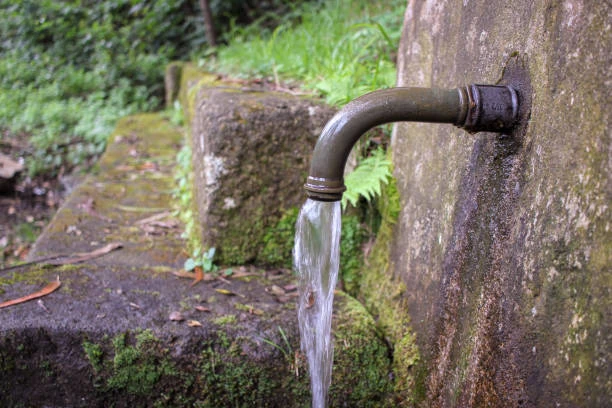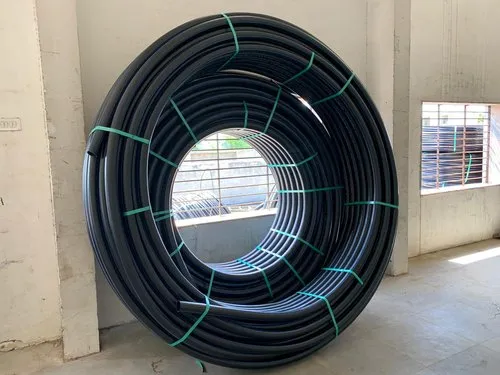The City of Troy is currently grappling with a significant challenge: how to finance the replacement of lead water pipes throughout the city. As awareness grows about the dangers of lead in drinking water, local governments are under increasing pressure to replace old and deteriorating water infrastructure that may pose a risk to public health. In Troy, like many cities across the country, a large number of homes and businesses still rely on outdated water pipes made of lead, which can leach harmful contaminants into the Water pipe supply.
Despite the urgent need to address this issue, Troy officials are finding it difficult to secure the necessary funding for these vital water pipe replacements. While the health risks associated with lead pipes are well documented, the financial burden of replacing thousands of miles of outdated water infrastructure presents a complex puzzle. In this article, we will explore the ongoing struggle in Troy, the health implications of lead water pipes, potential financing solutions, and what other cities are doing to tackle similar challenges.

The Health Risks of Lead Water Pipe
Lead contamination in drinking water is a serious public health issue. Lead pipes, often found in older homes and neighborhoods, are a significant source of lead exposure. Unlike modern plumbing materials, such as copper or PVC, lead pipes can corrode over time, causing the toxic metal to leach into the water supply. This contamination is particularly dangerous for young children, pregnant women, and vulnerable populations, as even small amounts of lead exposure can have lifelong health consequences.
1. Health Effects of Lead Exposure
Lead poisoning can cause a range of serious health issues, including developmental delays in children, cognitive impairments, learning disabilities, and behavioral problems. In adults, lead exposure has been linked to high blood pressure, kidney damage, and reproductive problems. The Centers for Disease Control and Prevention (CDC) has set the threshold for lead exposure at 5 micrograms per deciliter of blood, but there is no safe level of lead exposure, especially for young children.
In Troy, as in many other cities, aging lead water pipes are a major concern. In some neighborhoods, it is estimated that over half of the homes still rely on lead pipes or lead service lines. With the recent national focus on water quality, especially following the Flint water crisis, communities like Troy are beginning to prioritize lead pipe replacement, but the financial burden of such large-scale infrastructure projects remains a significant challenge.
The Scale of the Problem in Troy
Troy, located in upstate New York, is one of many cities facing the dual challenge of maintaining aging infrastructure while addressing the critical need to replace lead water pipes. According to city officials, an estimated 30% to 40% of Troy’s water pipes are either made of lead or have lead components. These pipes were installed decades ago, well before the dangers of lead were fully understood, and many of them are now nearing the end of their service life.
1. Lead Service Lines
In Troy, the primary concern is the presence of lead service lines. These are the pipes that connect the main water supply to individual homes and buildings. While the city has made progress in replacing some of these lines, a significant portion still remains in place. Replacing lead service lines requires digging up and replacing the pipes under streets, yards, and private properties—a costly and disruptive process.
2. Outdated Infrastructure
Beyond the lead service lines, much of the city’s broader water infrastructure is also outdated. As the city’s population grew in the 20th century, water pipes were installed to meet the needs of a growing community. Over time, however, many of these pipes have experienced wear and tear, increasing the risk of leaks, bursts, and contamination. Some of these pipes may also be made from materials that are prone to corrosion, such as cast iron and steel. Replacing or upgrading this infrastructure is a massive undertaking that requires substantial financial resources.
Financing the Lead Water Pipe Replacements
One of the biggest challenges Troy faces in replacing its lead water pipes is securing the necessary financing for such an expensive project. Estimates suggest that the city will need tens of millions of dollars to replace all of its lead water pipes. However, despite the known health risks and the need for immediate action, financing these replacements remains elusive.
1. Federal and State Funding Programs
To assist cities with the financial burden of replacing lead pipes, the federal government has established several funding programs. For example, the Infrastructure Investment and Jobs Act, signed into law in 2021, allocates billions of dollars to help communities replace lead pipes across the country. Troy is eligible to apply for these funds, but the process of securing this funding is competitive, and it is not guaranteed that the city will receive enough to cover all of its replacement needs.
New York State also offers grant programs through agencies like the Environmental Protection Fund and the New York State Drinking Water State Revolving Fund (DWSRF), which provide financial assistance to municipalities for water infrastructure projects. While these programs can offer valuable support, they are often insufficient to meet the full cost of replacing lead water pipes.
2. Local Bonds and Taxes
Given the gap in available federal and state funding, the city of Troy may need to explore local financing options, such as issuing bonds or increasing taxes. While issuing bonds could provide immediate funds for the project, it would require the city to repay the debt over time, which could strain the city’s budget and increase the tax burden on residents.
Increasing local taxes to fund the replacement of lead pipes is another option, but it may be politically unpopular, especially in a city that is already dealing with financial constraints. Higher taxes could lead to resistance from residents, particularly those who are already struggling with the economic impacts of the COVID-19 pandemic and rising living costs.
3. Public-Private Partnerships (PPPs)
Another potential solution to financing lead pipe replacements is through public-private partnerships (PPPs). Under this arrangement, private companies may help fund infrastructure projects in exchange for long-term contracts to operate and maintain the new water systems. While this can bring in needed resources, it also means that private entities would have a role in managing the city’s water supply, which may raise concerns about accountability and cost control.
4. Phased Approach
Because replacing all of the lead pipes at once is unlikely to be financially feasible, the city may adopt a phased approach to the project. The phased approach would allow Troy to gradually replace the pipes over a longer period while seeking additional funding and working to minimize disruption to residents.
The Role of Water pipe Community Engagement
As Troy considers its financing options, community engagement will play a critical role in ensuring the success of the lead pipe replacement project. Residents need to be informed about the risks associated with lead in drinking water and the benefits of replacing lead pipes. Additionally, they should have an opportunity to provide input on the proposed financing strategies, whether it be through public meetings, surveys, or other forms of outreach.
Engaging with the community can help build support for the project, especially if residents understand the long-term health benefits of replacing lead pipes. It can also help policymakers identify potential challenges, such as concerns about the financial impact of the project or disruptions caused by construction work.
Lessons from Water pipe Other Cities
Troy is not alone in facing the challenge of replacing lead water pipes. Many cities across the United States are grappling with similar issues. Here are some lessons that Troy can learn from other municipalities:
1. Water pipe Flint, Michigan
Flint’s water crisis brought national attention to the dangers of lead contamination in drinking water. While Flint’s situation was unique, it highlighted the importance of swift action in addressing lead pipe replacement. The city secured significant state and federal funding to replace lead pipes, but the process was slow and fraught with challenges. Troy can learn from Flint’s experience by ensuring that the process is transparent, well-managed, and designed to minimize disruption to residents.
2.Water pipe Pittsburgh, Pennsylvania
Pittsburgh has made significant strides in replacing lead service lines through a combination of local funding, state grants, and private investments. The city has prioritized replacing lead pipes in high-risk areas and has worked closely with residents to raise awareness about the risks of lead exposure. Pittsburgh’s experience shows that community engagement is essential to the success of lead pipe replacement efforts.
3. Water pipe Boston, Massachusetts
Boston has been proactive in replacing lead pipes by focusing on comprehensive, long-term planning. The city has allocated funds from its capital improvement budget to address lead pipe replacement gradually over a period of years. By setting clear goals and timelines, Boston has been able to make steady progress in reducing lead exposure in its water supply.
Conclusion
The City of Troy faces a critical challenge in financing the replacement of lead water pipes, but with the right combination of funding sources, community engagement, and careful planning, the city can successfully address this public health issue. Although the financial hurdles are significant, the long-term benefits of ensuring safe drinking water for residents far outweigh the costs.
By exploring a variety of financing options, including federal grants, local bonds, and public-private partnerships, Troy can move forward with a comprehensive plan to replace lead pipes and protect the health of its residents. Other cities have shown that while the process can be slow and complex, it is possible to make meaningful progress toward eliminating lead from the water supply. With strong leadership, public support, and continued efforts to secure funding, Troy can successfully navigate this challenge and build a healthier future for its residents.
Frequently Asked Questions (FAQs)
- What are lead water pipes, and why are they dangerous? Lead water pipes are plumbing systems made from lead, which can leach harmful toxins into drinking water. Lead exposure can cause severe health issues, particularly in children and pregnant women.
- How many lead water pipes are there in Troy? Approximately 30% to 40% of the water pipes in Troy are make of lead or contain lead components, posing a health risk to residents.
- What are the financing options for replacing lead pipes in Troy? Financing options include federal and state grants, local bonds, taxes, public-private partnerships, and a phased approach to gradually replace lead pipes.
- What health risks are associat with lead exposure? Lead exposure can cause developmental delays in children, cognitive impairments, behavioral problems, high blood pressure, kidney damage, and reproductive issues in adults.
- How long will it take to replace all of Troy’s lead pipes? Replacing all of Troy’s lead pipes could take several years, depending on available funding and the prioritization of replacement efforts in the most vulnerable areas.

















